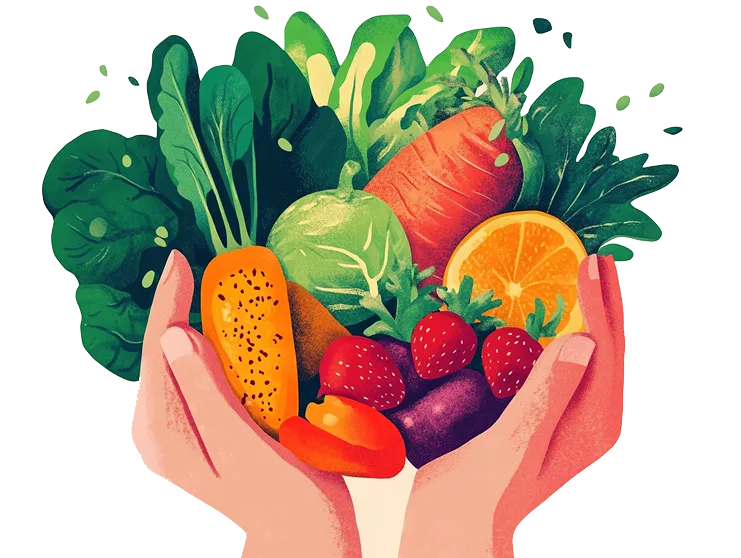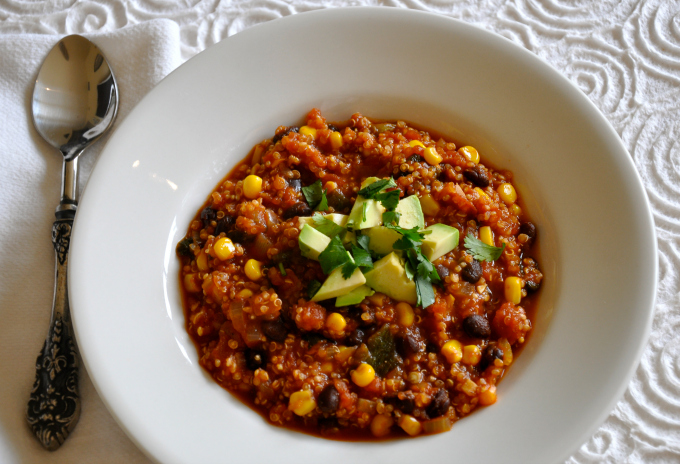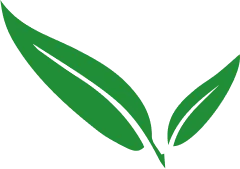High Protein, Gluten-Free Quinoa, Corn & Black Bean Chili Recipe here
Yesterday one of our Ordinary Vegan facebook community members reached out to me for help.
She wants to embrace a vegan diet, but cannot eat wheat or soy. She needed help finding the right foods to eat and worried about protein. I told her that it’s easy for a vegan diet to meet all the requirements of protein, vitamins and minerals even if you are following a gluten and soy-free diet. Here is why.
According to Dr. T. Colin Campbell, author of the China Study, there has been a historical overemphasis on protein.
Dr Campbell recommends that 8-10% of total calories should be protein. Most of us believe it is between 25-50%, but as we now know, excess animal protein is a potent trigger for chronic disease.
Conveniently, eating a varied whole-food, plant-based diet will naturally provide approximately 10% of protein from total calories without any special effort.
Below are some good rules to follow and a mix and match list of high protein foods to enjoy on a vegan gluten-free soy-free diet.
Rule #1
Never believe anything on the front of a package. As we have all learned recently, natural does not mean organic.
Rule #2
Always read the nutritional facts and ingredients list. Some natural, gluten-free products can be contaminated by wheat. Check that label to make sure it is certified vegan gluten-free.
Rule #3
Stay away from all processed foods even if they are vegan, soy and gluten-free. Processed foods are full of unknown ingredients and high levels of sodium.
Rule #4
Watch out for too much saturated unhealthy fat from cooking oils, vegan butters, processed crackers, bagels, cereals and tortillas even if they are vegan. Use veggie broth instead of oil when sauteing.
Rule #5
A vegan gluten-free and soy free diet is easy if you mix and match high-protein foods everyday from the list below. Try to include sources of protein in every meal and snack. Get your vitamins and minerals from leafy greens, veggies and fruits.
ps The best thing about a plant-based diet, you can eat all the natural foods you want without counting calories.
LIST OF HIGH PROTEIN VEGAN GLUTEN-FREE & SOY FREE FOODS
LEGUMES (one cup)
BAKED BEANS ….12.2 grams of protein
BLACK BEANS ….15.2 grams of protein
CHICKPEAS………11.9 grams of protein
KIDNEY BEANS….15.4 grams of protein
LENTILS…………..17.9 grams of protein
LIMA BEANS……..14.7 grams of protein
NAVY BEANS…….15.8 grams of protein
DRIED PEAS……….8.6 grams of protein
PINTO BEANS……14.0 grams of protein
SPLIT PEAS……….16.4 grams of protein
BLACK-EYED PEAS…11 grams of protein
WHOLE GRAINS (one cup cooked)
QUINOA………………..8 grams of protein
BROWN RICE……..5 grams of protein
AMARANTH…………9 grams of protein
BUCKWHEAT BERRIES…10 grams of protein
MILLET………………6 grams of protein
POLENTA………….5 grams of protein
POPCORN (one ounce)….3 grams of protein
SORGHUM…………10 grams of protein
WILD RICE…………..7 grams of protein (*Bob’s Red Mill makes many gluten-free grains and available on-line)
SEEDS AND NUTS (1/4 CUP)
ALMONDS………………….8 grams protein
CASHEWS…………………5 grams protein
WALNUTS…………………5 grams protein
PISTACHIOS……………..6 grams protein
PINE NUTS……………….4.5 grams protein
SUNFLOWER SEEDS….6 grams protein
PUMPKIN SEEDS……….3 grams protein
HEMP SEEDS…………….10 grams protein
CHIA SEEDS……………….8 grams protein
VEGETABLES (1 CUP)
SPINACH………………….5 grams protein
BROCCOLI……………….4 grams protein
PEAS………………………..9 grams protein
POTATO (MED)……….4 grams of protein
CORN……………………..5 grams of protein
KALE………………………2.5 grams of protein
SWEET POTATO……4 grams of protein
BRUSSEL SPROUTS….4 grams of protein
SWISS CHARD……..3.4 grams of protein
ASPARAGUS………..4.6 grams of protein (Eat all and any veggies you want)
FRUITS
APPLES, BANANAS, ORANGES & STRAWBERRIES are packed with essential vitamins and approximately .5-1 gram of protein.
DRIED FRUITS
FIGS (10 dried)………….5.7 grams of protein
RAISINS……………………4.8 grams of protein
NOODLES
ASIAN NOODLES are delicious and mostly gluten-free. They are made from ingredients like acorns, mung beans and sweet potatoes. Rice noodles are made from rice flour. Soba noodles are made from buckwheat.
B-12 The only reliable sources of vitamin B12 on a plant-based diet are fortified foods and supplements.
*always check with your doctor and have blood tests to check for B-12 deficiencies
B-12 SUPPLEMENT IRON SUPPLEMENT PROTEIN SHAKES
B-12 FORTIFIED FOODS
ALMOND MILK (one cup)………………………1.5 grams of protein
COCONUT MILK (one cup)……………………1 gram of protein
NUTRITIONAL YEAST…………………………Amounts vary depending on brand – fortified nutritional yeast is my go-to for B-12 everyday. Mix it in practically anything. I especially like it in baked goods, sprinkled on popcorn or stirred in oatmeal.
B-12 SUPPLEMENT IRON SUPPLEMENT PROTEIN SHAKES
TIPS FOR A VEGAN GLUTEN-FREE & SOY-FREE DIET
1. Use vinegar on greens and nutritional yeast on popcorn to add flavor.
2. Hummus is a wonderful high-protein snack. Serve with carrots, cucumbers, cherry tomatoes or spread on pita bread with cucumbers & sprouts.
3. Make lots of salads and top with high protein nuts or seeds.
4. Use frozen fruits for topping almond milk yogurt, oatmeal or for smoothies.
5. Make a vegan, gluten-free banana bread for quick and easy snacking.
6. Use organic maple syrup as a sweetener. Delicious on baked sweet potatoes.
7. When you crave ice cream – try some almond milk ice cream. Equally as delicious.
8. Call ahead to restaurants to make sure they have gluten-free, vegan meals. Sometimes you have to explain what that means exactly. Most restaurants will accommodate you especially with a heads up before you arrive.
9. If you live in an area where stores aren’t carrying many gluten-free, vegan products and grains, shop on-line for products.
10.When someone asks what you want for Christmas or your birthday, tell them gift certificates to plant-based stores like Whole Foods or Bob’s Red Mill online store.
Hope this vegan gluten-free soy-free guide helps all our new vegans on-board and anyone with food allergies. Please share this list with everybody you know, and encourage them to embrace a plant-based diet for the planet, for the animals and most importantly for their health.
Don’t miss any of Ordinary Vegan’s soy-free, vegan gluten-free recipes by subscribing here free. Also, please join or community on Facebook. It is fun and full of wonderful, compassionate people just like you.




Leave a Reply